Do you own a ’97-04 Boxster (986 chassis) or a ’99-04 911 (996 chassis)?
Do you or your mechanic cut open your oil filter during oil changes, and spread the filter media out to check for debris? If not, you should! If you already do, then you may already know that there’s a higher likelihood of the debris you’re seeing is either IMS bearing material (shiny silver), timing chain material (shiny silver), or plastic timing chain ramp material (dark brown or black).
This oil filter media inspection is something both of our shop locations perform during 986/996 oil changes, because it’s a straightforward way to be alerted to an engine component starting to fail.
Here are two pictures of the worst M96 oil filter debris we’ve ever seen:
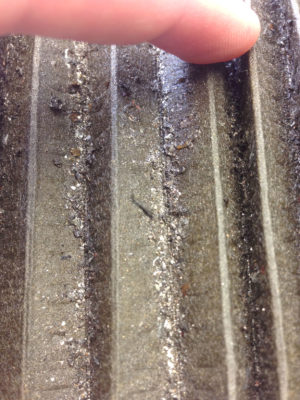
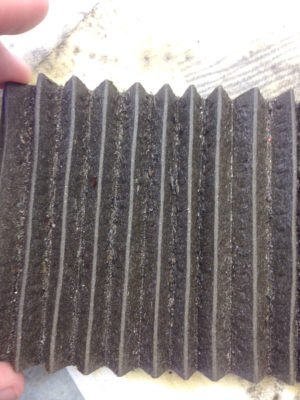
Note that both metallic (IMS bearing and/or timing chain) material, and plastic timing chain ramp material are easily visible throughout the filter media.
Unfortunately, this client had purchased the vehicle sight unseen, and without a pre-purchase inspection. Since this engine could be hiding too many unknowns deep inside and thus possibly too costly to try to salvage, this client decided that an engine replacement would be their next step.
Here is a picture of an M96 filter with much more debris than we’re comfortable seeing:
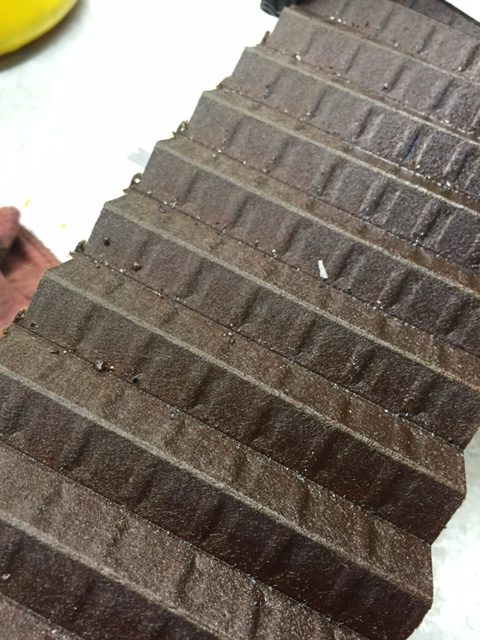
Here is a picture of what we more commonly see in an M96 oil filter:
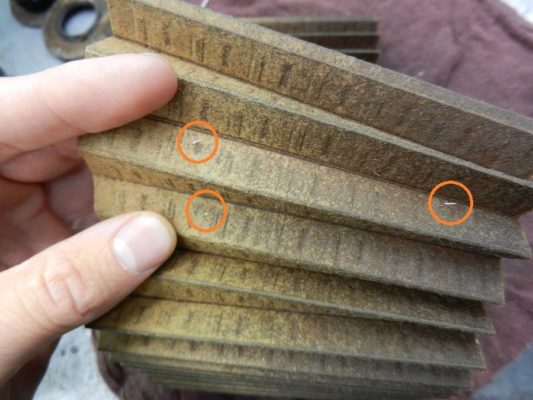
The two upper longer metallic pieces are starting to get larger in size than we’re normally seeing or feel comfortable seeing. The very small round metallic flake is pretty consistent with other M96’s.
While we’d like to see no metal debris whatsoever, even on non-Porsche (i.e. BMW) engines, it’s not uncommon to see very small flakes of shiny metallic debris here and there.
All in all, if you own an M96 engine, we would highly recommend that you make it standard practice to cut open and thoroughly check the oil filter media for any abnormal debris. If you find numerous or sizable pieces of debris, consult a professional Porsche specialty shop for further advice.
In a future tech blog post, I will show different stages of plastic timing chain ramp failure and what that means for your engine.
As always, let us know if you have any specific questions, and/or a topic suggestion for a future technical blog submission.
Jeremy Williams is the Oregon PCA Technical editor. He co-owns Matrix Integrated Inc. (Matrix Integrated Inc.) with his brother Justin. Jeremy can be reached at [email protected]



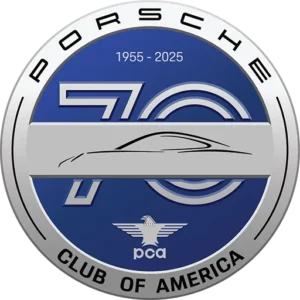
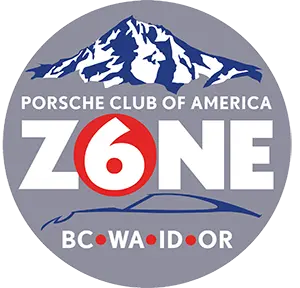
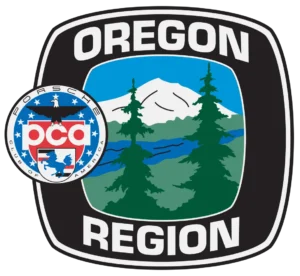
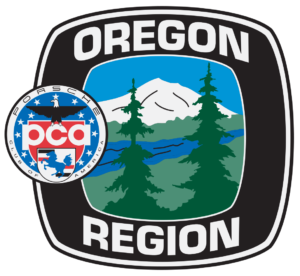

Given these issues with the M96 engine, what oil change interval would you recommend? I’ve heard some people say 5K mi. Would you agree? (My 996 is a daily driver.)
Hi Matthew,
A great question!
Yes, our recommendation is every 5000mi(with a full synthetic oil, and OEM oil filter), and cut open the oil filter to check for metal/plastic shavings/debris. Some find it easiest to lay/spread the filter media on a table to inspect.
If you don’t achieve 5000mi in a year, then we recommend having the oil/filter changed about every year to rid the crankcase of any condensation/contaminants.
I don’t drive my 2014 Cayman S during the winter months and I have the oil and filter changed when I start driving it in the Spring. This seemed to work well with my previous 2006 model, but I am now wondering if I should have the oil and filter changed just before I stop driving it in the Fall. What do you think?
Fantastic question Alan. Ideally, it’d be best to have the oil/filter changed before you put the CaymanS away for hibernation, AND THEN again when it comes out of hibernation in the spring. The reason for this is to get rid of any nasty contaminants/condensation in the oil before they sit in the engine/crankcase for the winter months(one could argue that these contaminants/condensation could cause some minor engine corrosion), and then by changing at least the oil again in the spring(you can probably skip the filter change in the spring since the filter hasn’t been used much save for 1 or 2 starts) after hibernation you’re getting rid of any possible condensation that may have accumulated over the winter.
However, I understand that this process can be expensive due to the cost of high quality full synthetic engine oil. So if I was given a choice to change the oil/filter only a SINGLE time, either before or after winter hibernation, it’d really come down to mileage on the current oil/filter. If you have considerable mileage(let’s say 2500-4000mi) and especially short trips on the oil/filter as you head into late fall, then I’d recommend changing the oil/filter before the car goes into winter hibernation. If you just recently changed the oil/filter in earlier fall(let’s say you only have 1000mi on it), then I’d recommend changing it again when the car comes out of hibernation as any condensation that builds up in the new oil during the winter will get burned off in the spring once you start driving. Does this make sense?
Hi Jeremy – I have a question. My 2014 Boxster has 11,559 miles on it. A year ago I had a 20k mileage service done at the dealership. At that point I had 9,229 miles (so 2,330 miles since service). It looks like I should get the oil/filter changed now but is there anything else I should have done? Thanks in advance.
Hi Peg, more good questions. Porsche recommends an oil/filter change every year(if we’re talking time-based vs mileage-based; mileage-based is another topic), so to answer your first question, if you won’t be driving your Boxster at all this winter then I’d suggest having the oil/filter changed before you put the Boxster into hibernation since you have over 2300mi on this oil/filter.
As far as what else should be done around this time, I’d recommend checking your paperwork for the 20k service and make sure they had performed a brake fluid flush. Porsche recommends this every 2years, so depending on what’s called your in-service date(when your vehicle first went into service/use), the brake flush would have been due sometime in 2016. The reason for the brake fluid flush every 2yrs is because the brake fluid is hygroscopic(not hydroscopic as you’d think regarding water/”hydro”), meaning it gathers moisture from the air over time. Water in the brake fluid is bad because of corrosion, and not compressing well. Brake fluid shouldn’t have more than 2% moisture in it, and in our climate usually the fluid gathers about 2% of moisture in a 2yr time span.
Good info Jeremy!! You might remind folks that the IMS is not just confined to 986/996 models. The 987/997 cars from 2005-2008 have them as well. Though the failure rates due to dual row bearings are much, much lower.
With regard to not driving in the winter, it wouldn’t be just IMS issues you’d be currying but a whole host of them with regard to lubrication. Even if you don’t back it out of the garage, I would at least open the door, fire it up, and let it run ’till it gets warm at least once a month. This circulates the oil in the motor properly with the addition benefit (after shut down and closing the door) of warming the garage so you can pull up a lawn chair and commune with your baby.
Above all, when you DO drive it. Drive like a Porsche!!
Very good points Randy. While 986 Boxster’s and 996 911’s combine to account for the majority of IMS issues/debris in the oil filter, some ’05 997 911’s still had M96 engines in them(left over from 996 production), and the M97’s in ’05ish-’08 987/997 still had IMS bearings which could be a problem, although LN Engineering states that the failure % is much lower. Do note the single vs dual bearing in the M97; “Starting with the 2006 model year, the design was again revised to use a much larger single row bearing with the same load capacity of the early dual-row ball-bearings. This bearing increased in diameter, which increased the bearing and ball speed, further improving the bearing. However, starting with the 2006 model year, Porsche in its third revision of the intermediate shaft bearing, changed over to a design that is not serviceable, leaving later model years with no recourse for addressing this issue with preventative maintenance.” More about all the IMS variations can be read here; https://www.oregonpca.org/resources/ims-bearing-the-full-story/
Regarding starting the engine up during hibernation, as you mention, this is ok as long as the engine gets up to full operating temp (ideally, driving the car for 30min+ is best to really exercise all the drivetrain bits, transmission/gear fluid, brake caliper pistons, etc). It is NOT recommended to simply start the car, let it idle for 5min, and then shut it off, as this doesn’t burn off any contaminants in the engine oil.
It IS always ok to pull up a chair and commune with your special Porsche, whether you’re going to drive it that day or not. Enjoy it!!
hi guys I’m the new owner of a 987s 2005 with high mileage 137k. I’ve just done an oil and filter change and cut open the filter as per your recommendation. Unfortunately I to have some debris. a little less and smaller than picture two but more than picture three.as far as I can see the filter has been in there for 10 months and 5000 miles…that’s if the previous owner hasn’t changed it
if you could supply me with an email address I can send you some pics
many thanks peter Great Britain.
Hi Peter, sorry for the delay, your reply got caught up in spam. If only a few flakes on the first oil change of your ownership, I wouldn’t be too overly concerned at this point. But perhaps this next oil/filter change, depending on time(should be less than 1yr interval), perhaps 4000mi. Also, what brand/weight engine oil are you running, and full synthetic or synthetic blend? Feel free to email pictures here; [email protected]